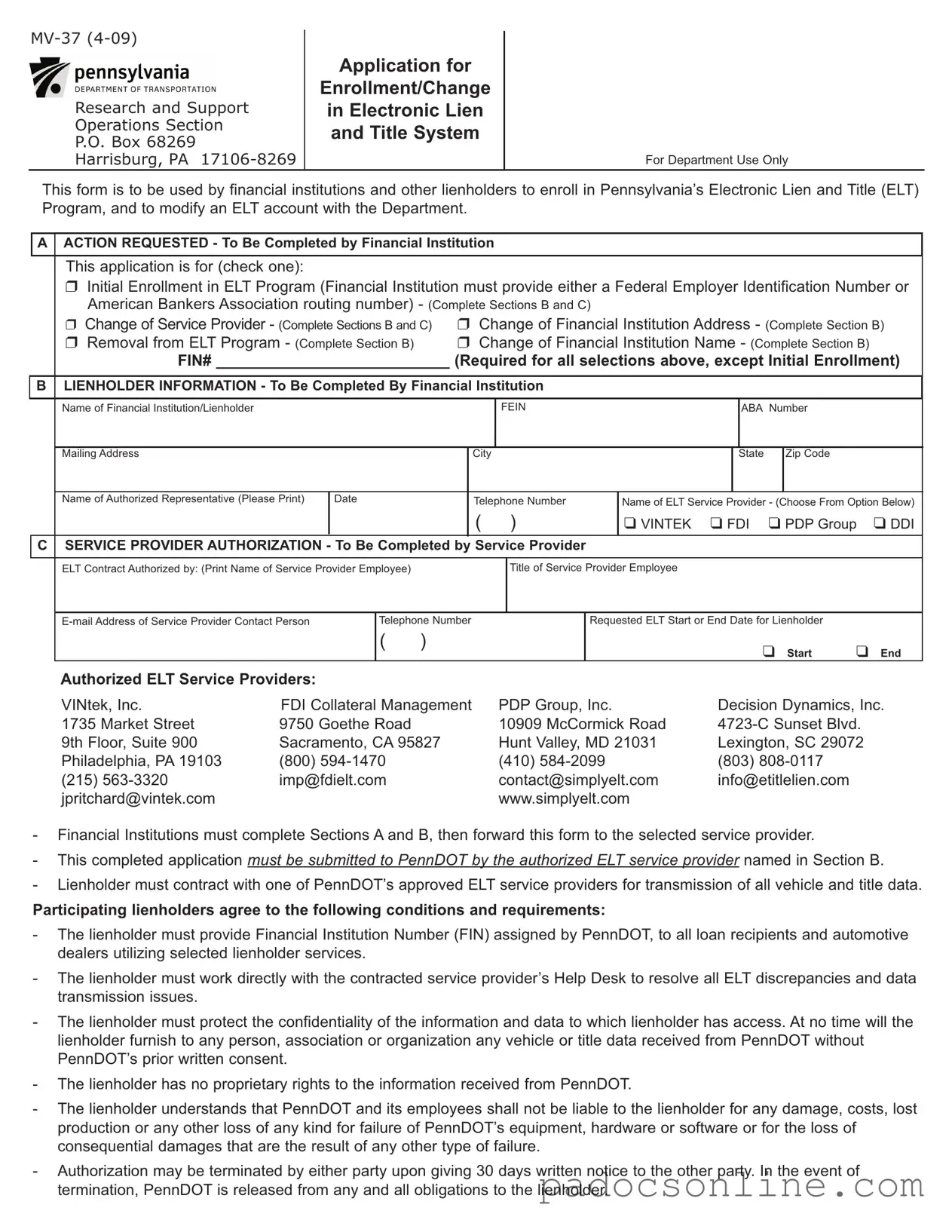Filling out the Pennsylvania MV-37 form can be straightforward, but mistakes are common. One frequent error is not providing the required Federal Employer Identification Number (FEIN) or American Bankers Association (ABA) routing number. This information is crucial for initial enrollment in the Electronic Lien and Title (ELT) Program. Without it, the application cannot be processed, leading to unnecessary delays.
Another mistake people often make is failing to complete all necessary sections of the form. Each action requested, whether it’s an initial enrollment or a change of service provider, requires specific sections to be filled out. Skipping sections can result in an incomplete application, which may be returned or denied by PennDOT. It’s essential to carefully read the instructions and ensure that every relevant section is properly filled out.
Inaccurate or incomplete lienholder information is also a common pitfall. The name of the financial institution, mailing address, and contact details must be correct. If any of this information is incorrect, it can lead to confusion and complications in the processing of the application. Double-checking these details before submission can save time and effort.
Additionally, some applicants overlook the importance of the authorized representative's signature. This signature is necessary to validate the application. Without it, the form may be deemed invalid, and the application process will stall. It’s important to ensure that the authorized representative signs the form before it is sent to the service provider.
Lastly, not following the submission guidelines can lead to errors. The completed MV-37 form must be submitted to PennDOT by the selected ELT service provider. Applicants sometimes submit the form directly, which is against the protocol. Adhering to the submission process is vital for the application to be processed smoothly and efficiently.
